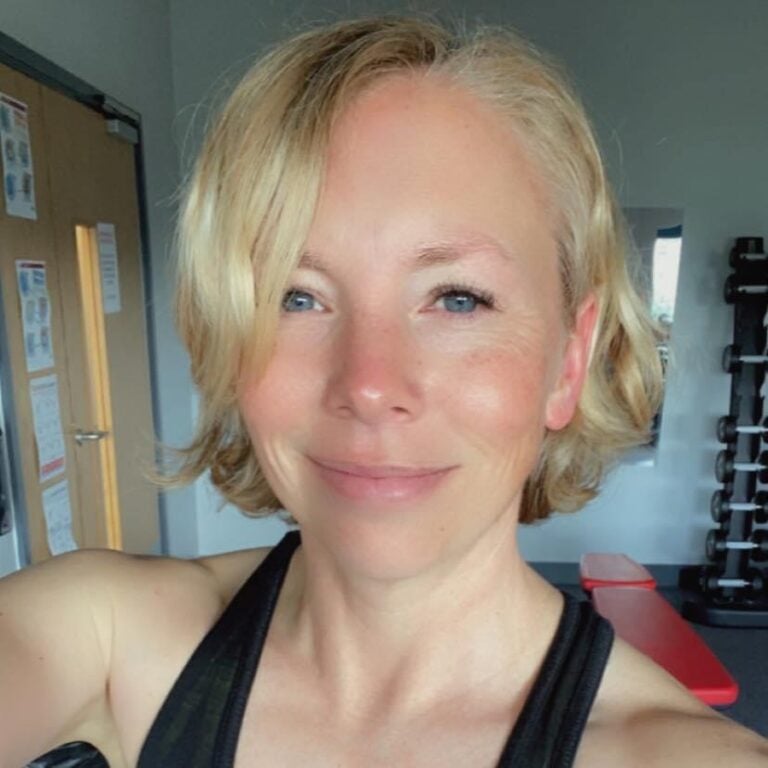
10 sleep truths from the experts
Rebecca Frew
Building muscle when you’re older isn’t impossible – we show you how it can be done.
Exercise has many benefits, both physical and psychological. As well as being an enjoyable thing to do, exercise protects against many health issues and can increase longevity.
While cardio helps keep your heart and lungs in good condition, strength training preserves muscle mass. Sarcopenia – a decline in muscle mass – can ultimately lead to degenerative diseases such as osteoporosis, so it’s important you do what you can to keep your muscles healthy.
Tim Harris, personal trainer and fitness expert at Goldster, says: “Around our mid-thirties, our muscles can start to begin their natural decline in ability, flexibility and healing potential. Decline in muscle mass and muscle potential, known as muscle atrophy, is simply a part of ageing. The question is, what can we do about it?”
Exercise has many benefits, both physical and psychological. As well as being an enjoyable thing to do, exercise protects against many health issues and can increase longevity.
While cardio helps keep your heart and lungs in good condition, strength training preserves muscle mass. Sarcopenia – a decline in muscle mass – can ultimately lead to degenerative diseases such as osteoporosis, so it’s important you do what you can to keep your muscles healthy.
Tim Harris, personal trainer and fitness expert at Goldster, says: “Around our mid-thirties, our muscles can start to begin their natural decline in ability, flexibility and healing potential. Decline in muscle mass and muscle potential, known as muscle atrophy, is simply a part of ageing. The question is, what can we do about it?”
 Credit: Shutterstock / Eva HM
Credit: Shutterstock / Eva HMThe physiological process of building muscle is relatively straightforward, and it’s the same no matter what your age. As we move, our muscles contract – or pull. This triggers a series of chemical and mechanical reactions within our muscles. It happens every time we move, but especially when the muscle is placed under tension – such as when we lift weights.
This chain of events ultimately delivers more proteins from the blood into the muscle fibres, causing them to get bigger.
Theoretically it’s more difficult to build muscle once you’re over 50, but the reality is much more nuanced than that. There has been a study into whether it’s harder to build muscle as you age, but it was relatively small. Another study into muscle growth was conducted on rats, but both findings suggest that as we age the body becomes less receptive to the effects of muscle-building exercise.
The studies noted that when younger men exercise, 150 gene changes take place within the body. For men over 50, this was reduced to 42.
These findings can also be combined with other factors: we know that hormonal changes in postmenopausal women mean it’s harder for them to build muscle (due to lower oestrogen). It’s harder for older adults to process protein for energy (which is why we need more).
“Towards our mid-fifties our muscles become more insulin resistant,” Harris adds. “The pancreas converts excess glucose in our blood into glycogen that’s stored in our muscles. If these stores build up and are not used, our muscles become less efficient at using and burning this form of energy. The outcome? It gets stored as fat.”
We can fall into a more sedentary lifestyle as we age – often without noticing. Moving less can cause muscle mass to diminish and fat stores to increase, but this doesn’t need to be the case.
 Credit: Shutterstock / wavebreakmedia
Credit: Shutterstock / wavebreakmediaAbsolutely, yes! It might take a bit more work, but that’s all the more reason to keep going. Building muscle – or even working to keep what we have – is crucial to healthy ageing. Not only does it keep us mobile, it can also improve our lifespan.
“Like many things, the more we do something, the better we tend to become at it,” Harris says. “The older we get, the more we must keep our muscles healthy and strong. That’s not to say that at the age of 70 you should be so muscular that you can’t fit through your front door. However, all our muscles should be in their best health possible to minimise injury, prevent many diseases and aid in weight management.”
If you want to protect your bones, health and longevity, follow our top tips to preserve and build muscle.
Strength training should be an integral part of a balanced exercise regime. The benefits of strength training are far-reaching – not only does it help build muscle, but it also has multiple health benefits, including weight loss.
“Our muscles play a big part in levelling out our blood sugar levels,” Harris says. “So just when you thought having healthy muscles makes you feel and look better, it can also help manage weight, mood and energy levels.”
To get stronger and increase muscle, you don’t need a dramatic overhaul of your workouts, as Harris explains: “Starting at just twice a week for 30 minutes, we can actively teach our muscles to become more efficient at building strength, allowing glucose to be used for energy and helping us to fight against age-related diseases like diabetes and Alzheimer’s.
“Once you have started the process of lifting weights as part of your weekly routine, you will start to notice physical confidence levels improving, weight management to be a little more under control (diet permitting) and most importantly, giving your skeleton a homemade body armour.”
Strength training doesn’t need to involve lifting as much weight as you can in one go. In fact, studies have found that a quicker, lighter, higher repetition approach to strength training might be more beneficial to older adults than a traditional slow, heavy-weight, low-rep approach.
The reasons behind it make sense; lifting less weight but for more reps – say, 10kg (22lb) for 20 reps instead of 20kg (44lb) for 10 reps – builds better ‘peak power’ in older adults. This makes us more reflexive, so we can react quicker if we trip, for example. We can still look after our muscle mass in this way too, so it’s a win-win approach.
 Credit: Shutterstock / Aleks 333
Credit: Shutterstock / Aleks 333A crucial part of building muscle is allowing ourselves adequate time to recover between exercise sessions. If you want to see results from your exercise, whether that’s weight loss, building muscle or something else, it can be tempting to work out everyday as hard as you can.
However, all that extra strain on your muscles (and your cardiovascular system) can make you more prone to injury or illness. Try to give yourself at least 24 hours to recover between strength training sessions or vigorous physical activity, and your muscles will have time to repair themselves and grow. You can still exercise at a lower intensity on your rest days, such as taking a walk or going on a bicycle ride.
Protein forms the building blocks of muscle. Most of us eat more than the recommended amount of protein, so you don’t need to worry about getting enough, but it is worth noting that we do need more as we age. However, we also need fewer calories, so make wise choices.
Opt for lean meat or fish, with a small amount of red meat per week if you want. If you’re vegetarian, vegan, or just trying to cut down meat consumption, tofu, tempeh, beans and pulses are good protein sources.
Sleep should be a major part of your exercise routine. Yes, you read that right – sleep. It allows our bodies to rest, recover, heal and come back stronger. The end of one workout is really the beginning of the next – eating, hydrating and resting set us up for the next time we exercise.
A full night’s sleep gives your hormones time to repair muscle tissue and for cortisol levels (the stress hormone) to drop. The flip side is that not enough sleep can keep your body in a state of stress, meaning it can’t heal properly. Over time this adds up and can lead to poor performance in workouts or injury.
Sleep and exercise go hand in hand – exercise promotes better quality sleep, and better sleep helps you to exercise better. Win-win!

Written by Becky Fuller she/her
Published: Updated:
Becky Fuller is a fully qualified Personal Trainer, specialising in strength and conditioning for over 50s. Becky’s focus is helping people to become stronger both in body and mind, and to move well without pain. Becky also has many years’ experience working as a freelance journalist, writing for a wide variety of publications such as Screen Rant, Geek Feed, and Daily Actor. She also regularly reviews theatre productions for UKTW.